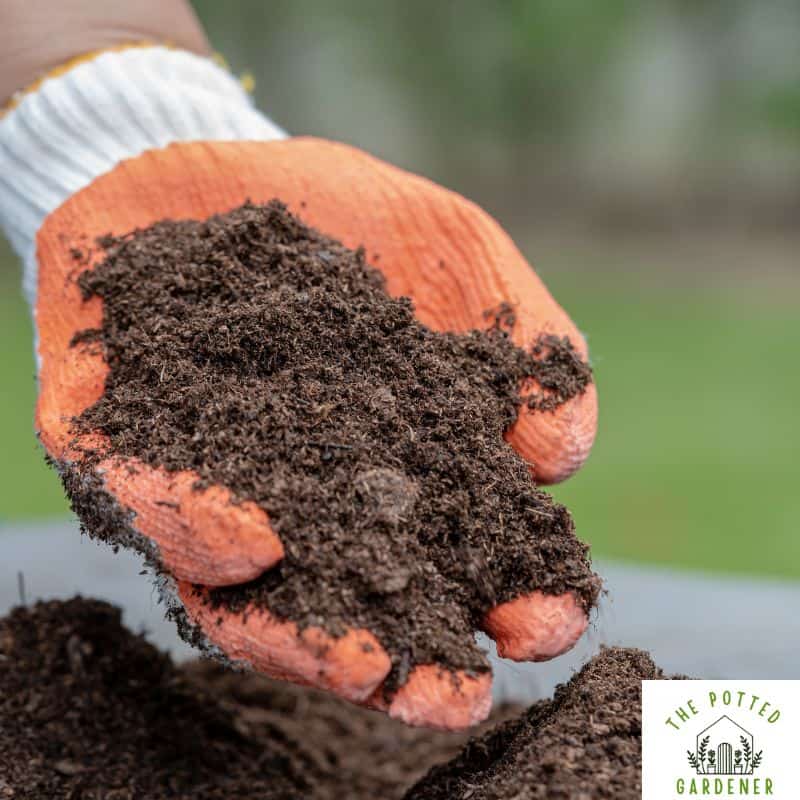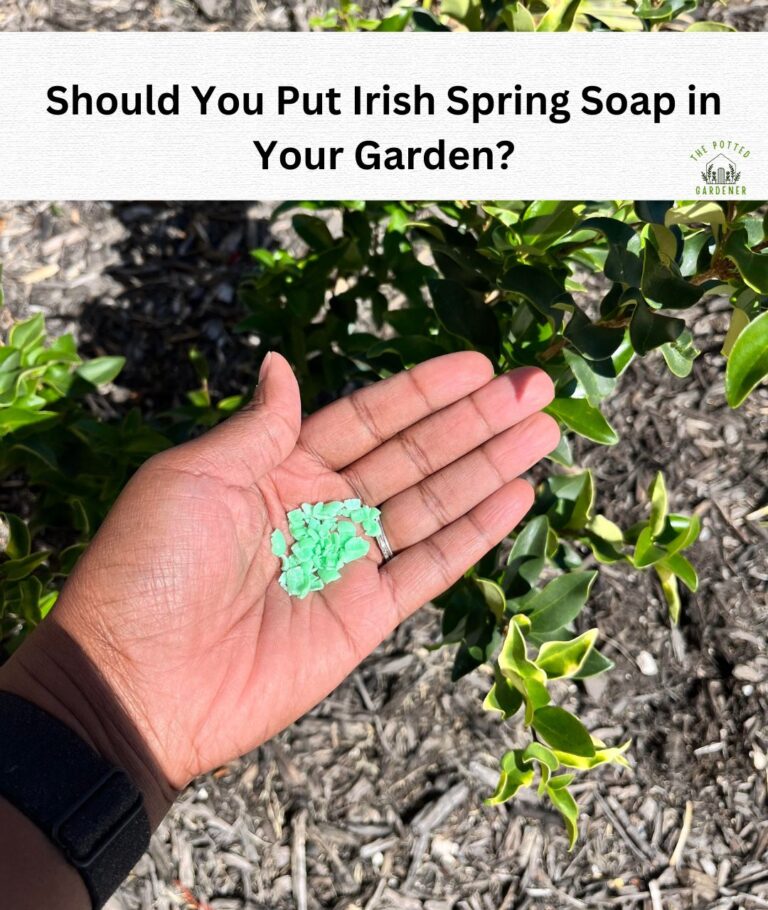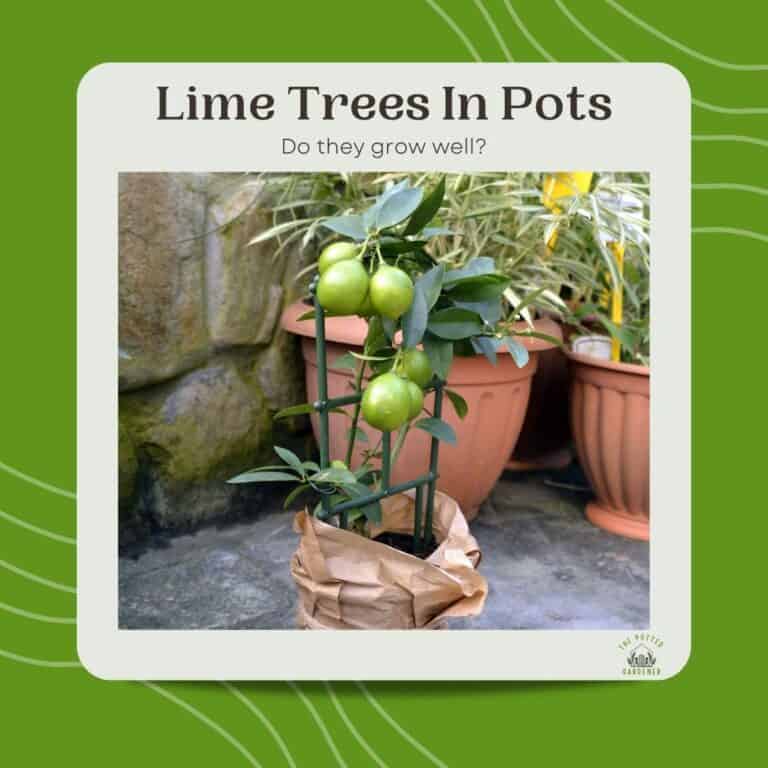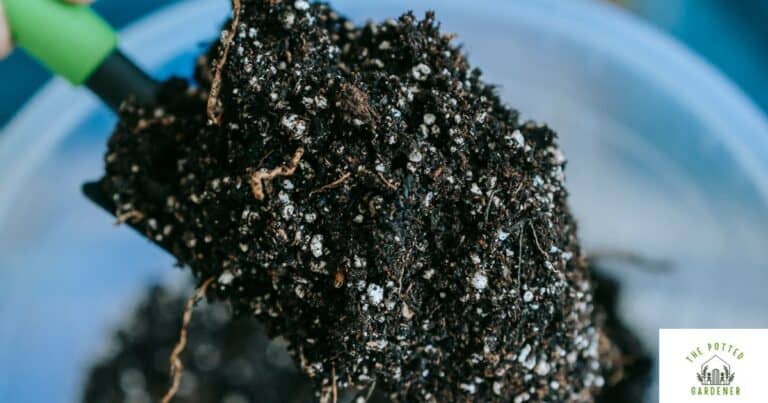Are you considering using garden soil in your pots? While it may seem like a convenient and cost-effective option, it’s important to understand the potential drawbacks. Garden soil is designed to be used in the ground, where it can benefit from natural drainage and nutrient cycles. When used in pots, it can lead to problems like poor drainage, nutrient imbalances, and even root rot.
One of the main issues with using garden soil in pots is that it can become compacted, reducing the amount of air and moisture that reaches the roots. This can lead to suffocation and root rot, which can ultimately kill your plants. Additionally, garden soil may not contain the right balance of nutrients that potted plants need to thrive. This can result in stunted growth, yellowing leaves, and other signs of nutrient deficiencies.
While there are some situations where garden soil can be used in pots, it’s generally not recommended. Instead, it’s best to use a high-quality potting mix that’s specifically designed for container gardening. This will ensure that your plants have the right balance of nutrients, moisture, and air and that they can grow and thrive to their full potential.
Let’s talk more about if this is a good idea or not.

Will Garden Soil Work In Pots?
If you’re thinking of using garden soil in your pots or indoor plants, you may want to reconsider. While garden soil is great for in-ground gardening, it may not be the best option for your container plants.
This applies to raised garden beds too, like those you can buy in garden centers made of wood, metal, or plastic. Basically, if they are not in ground garden beds, we are considering these to be containers or pots for all intents and purposes.
Here’s the run down on potting soil vs garden soil.
Moisture Retention
Garden soil is dense and heavy, which means it can hold a lot of moisture. While this may seem like a good thing at first, it can actually be detrimental to your potted plants. Excess moisture can lead to root rot and other diseases, causing damage to the roots and stunting plant growth.
Compaction
When garden soil is used in pots, it can become compacted over time. This can make it harder for plant roots to grow and access the nutrients they need. Compacted soil can also reduce the amount of oxygen available to the roots, which can further hinder plant growth. You’ll end up needing to fix compacted soil in your potted plants, rather than enjoying them.
Lack of Drainage
Garden soil may not have the necessary drainage properties for potted plants. Containers need to have drainage holes to allow excess water to escape for proper water drainage. Even with drainage holes, garden soil may not drain properly. This can lead to waterlogged soil and root rot.
Lack of Nutrients
While garden soil is rich in nutrients, it may not provide the right balance of nutrients for potted plants. Potted plants require a specific balance of nutrients to thrive, and garden soil may not meet those requirements. Adding compost or slow-release fertilizer can help provide the necessary nutrients.
Weed Seeds
Garden soil may contain weed seeds that can sprout in your pots, causing unwanted plants to grow alongside your desired plants. The seeds can reach the soil from birds, animals, poor compost, poor soil, and even neighboring plants. To prevent this, use a soilless mix or sterilize your garden soil before using it in pots.
Soil Types for Pots
When it comes to gardening in pots, the type of soil you use is crucial for the health and growth of your plants. Unlike outdoor gardens which have access to natural sources of nutrients, potting soil is the way to go as a growing medium for these type of plants.
There are many different types of soil available. In this section, we will discuss the three main types of good quality soil for pots: potting soil, soilless mixes, and seed starting mix.
Potting Soil
Potting soil is specifically formulated for container gardening and usually contains a blend of peat moss, perlite, and vermiculite. It is designed to be lightweight, well-draining, and nutrient-rich. Potting soil is an excellent choice for most plants, including vegetables, herbs, and flowers.
When choosing potting soil, look for one that is labeled as sterile, meaning it is free of weed seeds, pathogens, and pests. Also, consider the pH level of the soil, as some plants prefer more acidic or alkaline soils.
A good potting mix will be lightweight and can be easily moved around when reporting or moving plants.
Soilless Potting Mix
Soilless mixes are made from a combination of organic and inorganic materials and do not contain any soil. They are designed to be lightweight, well-draining, and free of pests and diseases. Soilless mixes are an excellent choice for plants that require good drainage, such as succulents and cacti.
Some common ingredients in soilless mixes include peat moss, perlite, vermiculite, coconut coir, compost, and rice hulls. When choosing a soilless mix, look for one that is well-balanced and contains a good mix of organic and inorganic materials.
A good organic option is FoxFarm Ocean Forest Potting Soil, it contains natural ingredients like bat guano and worm castings that provide essential nutrients to your plants.

Seed Starting Mix
Seed starting mix is specifically designed for starting seeds in pots. It is usually made with a blend of primary ingredients like peat moss, vermiculite, coconut coir, pumice, and perlite. It is an ideal environment for seedlings and is designed to be lightweight, provide excellent drainage, and be free of weed seeds and pathogens.
Seed starting mix is an excellent choice for starting seeds because it provides a sterile environment that is free of pests and diseases. It also provides the right balance of moisture and air for seed germination.

Garden Soil For Pots: The Importance of Proper Soil for Potted Plants
Did you accidentally use garden soil in pots? Was it all you had at the time? Sorry to break the news but its not a good option. I’ll explain why.
Even bagged garden soil in pots can lead to a host of problems, including stunted growth, root damage, and even death. Here are some of the reasons why proper soil is so important for potted plants:
Nutrients
Plants need a variety of nutrients to grow and thrive, and the soil is where they get most of these nutrients. The right soil will contain the right balance of nutrients, including nitrogen, phosphorus, and potassium. If you use soil that doesn’t contain enough of these nutrients, your plants may not grow as well as they should.
Water and Drainage
Potted plants need to be watered regularly, but they also need good drainage to prevent root rot. The soil you use should be able to hold water without becoming waterlogged. Look for soil that contains perlite or vermiculite, as these materials help to improve drainage.
Oxygen
The roots of your plants need oxygen to grow and thrive, and the soil you use can affect how much oxygen is available to them. Using soil that is too compacted can reduce the amount of oxygen that reaches the plant’s roots, which can lead to stunted growth or even death. Look for soil that is loose and well-aerated.
Weed Seeds
One of the biggest problems with using garden soil in pots is that it may contain weed seeds. These seeds can sprout and compete with your plants for nutrients and water, which can stunt their growth or even kill them. If you do use garden soil, be sure to sift it through a mesh screen to remove any weed seeds.
Soil Compaction
When used in containers, garden soil can become very compacted. This can make it difficult for roots to grow and can lead to stunted growth or even death. Look for soil that is loose and well-aerated to avoid this problem.
Fertilizer and Manure
Potted plants need regular fertilization to stay healthy, but not all types of soil are suitable for this. If you use soil that contains manure, for example, you may end up over-fertilizing your plants, which can lead to nutrient burn. Look for soil that is specifically formulated for container gardening.
Watering
The type of soil you use can also affect how often you need to water your plants. Soil that retains water well may require less frequent watering, while soil that drains quickly may require more frequent watering. Pay attention to the moisture level of your soil and adjust your watering schedule.
Alternatives to Garden Soil for Pots
When it comes to growing plants in pots, using garden soil is not always the best choice. Garden soil can be heavy, and dense, and may contain weed seeds or pathogens that can harm your plants. Luckily, there are several alternatives to using garden soil in pots.
Potting Mixes
Potting mixes are specially formulated to provide the ideal growing conditions for plants in containers. They are typically made from a blend of ingredients such as peat moss, perlite, vermiculite, and/or coconut coir. Potting mixes are light, well-draining, and can be customized to meet the specific needs of your plants.
Soil Amendments
Soil amendments can be added to garden soil to improve its texture, drainage, and nutrient content. Some common soil amendments include sand, perlite, vermiculite, and organic matter such as compost or composted bark. Adding soil amendments can help create a soil mix that is better suited for growing plants in containers.
When choosing a potting mix or soil amendment, it’s important to consider the pH level of the mix. Most plants prefer a slightly acidic soil with pH levels between 6.0 and 7.0. If the pH is too high or too low, it can affect the availability of nutrients to your plants.
Bagged Potting Soil
Purchasing bagged potting soil is the easiest alternative to using garden soil in containers. While the initial purchase can be more expensive as compared to just getting soil from your yard, the extra labor and cost of replacing plants can outweigh the purchase price of bagged soil in the long run. Look for a high-quality potting mix that contains a balanced blend of organic matter, slow-release fertilizer, and a wetting agent to help the soil retain moisture.
Other Alternatives
Other alternatives to using garden soil in pots include clay soil, topsoil, loam, and sandy soil. However, it’s important to note that these options may not be suitable for all plants and may require additional amendments to create the ideal growing conditions.

How to Make Your Own Homemade Potting Mix
If you want to skip commercial potting mix make your own potting mix it is possible! You can use a variety of organic materials to create a consistent, well-draining soil mix that will help your plants thrive. Here are some tips for making your own DIY potting soil:
Choose the Right Ingredients
When making your own potting mix, it’s important to choose the right ingredients. Some common organic materials that you can use include:
- Coconut husks
- Sphagnum peat moss
- Composted bark
- Perlite
- Vermiculite
- Sand
These materials will help to create a soil mix that is sandy and coarse enough to provide good drainage, while also retaining moisture and nutrients for your plants.
Mix the Ingredients Together
Once you have gathered your ingredients, you can start to mix them together to create your potting mix. The key is to get the right consistency – not too wet and not too dry. You can use a ratio of 1:1:1 for coconut husks, sphagnum peat moss, and perlite or vermiculite, and then add sand as needed to create the right texture.
Consider Your Native Soil
If you are using your own native soil for your potting mix, you may need to amend it with organic materials to improve its texture and drainage. You can add compost, perlite, or vermiculite to your soil to create a more suitable mix for container gardening.
Fertilize Your Potting Mix
To ensure that your plants get the nutrients they need, you should also consider adding a slow-release fertilizer to your potting mix. You can use a pelleted time-release fertilizer or mix in some composted cow manure to provide a steady supply of nutrients over time.
By making your own potting mix, you can create a soil mix that is tailored to the needs of your plants and provides the right balance of moisture, nutrients, and drainage. With a little experimentation, you can find the perfect recipe for healthy plants and your container gardening needs.

Tips for Using Garden Soil in Potted Plants and Containers
If you’re still thinking about using garden soil in your container gardens, there are a few things you should keep in mind to ensure your plants thrive.
1. Mix Garden Soil with Potting Soil
Can I mix garden soil and potting soil for pots? Yes, this may be an option for raised beds, to improve water retention and drainage. The ratio of garden soil to potting soil will depend on the type of plants you are growing and what specific needs they have. Generally, you can mix one part garden soil with two parts potting soil. This will help ensure that your plants receive the nutrients they need while also allowing excess water to drain away. If you’re not sure which garden soil to use, Miracle-Gro garden soil is a popular brand that many gardeners swear by.
2. Potting Soil or Garden Soil for Vegetables
If you want to use garden soil for container vegetable gardens, make sure to remove any weeds or debris in order to give your vegetables the best chance at thriving. Make sure the soil is good quality and well-draining. The soil should be well aerated. Check the ph level of the soil to make sure it is suitable for the type of vegetables you are growing.
3. Ensure Proper Drainage
Containers need drainage holes to allow excess water to escape. If your container doesn’t have drainage holes, your plants may become waterlogged and develop root rot. Be sure to add drainage holes to your container if it doesn’t have them already.
4. Water Your Plants Regularly
Container plants need to be watered more frequently than plants grown in the ground. Check the soil regularly, and water your plants when the top inch of soil feels dry to the touch. Be sure not to overwater, as this can lead to root rot.
It is clear that garden soil should not be used in potted plants. Garden soil is intended for use in the ground and contains minerals and organic matter which can make it difficult to maintain proper soil moisture levels, leading to root rot.
Instead, potting mixes made with peat moss, perlite, and compost are recommended for potted plants as they provide better drainage and aeration.








